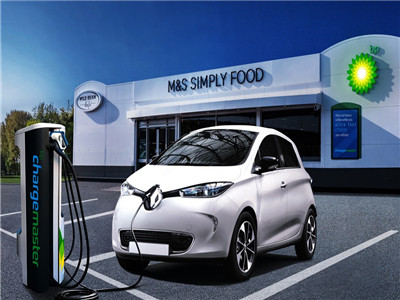All EVs offer a multitude of measures used to slow down the process of battery degradation. However, the process is inevitable.

While electric vehicles have been proven to have considerably lower ownership costs compared to their ICE counterparts, battery longevity remains an equivocal subject. Similar to how consumers ask how long the batteries can last, manufacturers often question the same subject. ”Every single battery is going to degrade every time you charge and discharge it,” Atlis Motor Vehicles CEO, Mark Hanchett, told InsideEVs.
Essentially, it’s inevitable that your electric car battery, or any rechargeable Li-ion battery, will lose its capacity it once had. However, the rate at which it’ll degrade is the unknown variable. Everything ranging from your charging habits to the very chemical makeup of the cell will affect your EV battery’s long-term energy storage.
While many factors are at play, there are four main elements that assist in further degrading EV batteries.
Fast Charging
Fast charging itself doesn’t necessarily cause accelerated battery degradation, but the increased thermal load can damage the internal components of the battery cell. The damage of these battery internals leads to fewer Li-ions being able to transfer from the cathode to the anode. However, the amount of degradation the batteries face is not as high as some may think.
Earlier last decade, the Idaho National Laboratory tested four 2012 Nissan Leafs, two charged on a 3.3kW home charger and the other two strictly charged at 50kW DC fast stations. After 40,000 miles, the results showed that the one charged on DC only had three percent more degradation. 3% will still shave your range, but the ambient temperature seemed to have a far greater effect on the overall capacity.
Ambient Temperatures
Colder temperatures can slow down an EV’s charge rate and temporarily limit the overall range. Warm temperatures can be beneficial for rapid charging, but prolonged exposure to hot conditions can damage the cells. So, if your car is sitting outside for long periods, it’s best to leave it plugged in, so it could use the shore power to condition the battery.
Mileage
Like any other rechargeable lithium-ion battery, the more charge cycles, the more wear on the cell. Tesla reported that the Model S will see around 5% degradation after breaching 25,000 miles. According to the graph, another 5% will be lost after around 125,000 miles. Granted, these numbers were calculated via standard deviation, so there are likely outliers with defective cells that weren’t shown in the graph.
Time
Unlike mileage, time typically takes the worst toll on batteries. In 2016, Mark Larsen reported that his Nissan Leaf would lose around 35% battery capacity at the end of an eight year period. While this percentage is high, it’s because it’s an earlier Nissan Leaf, which is known to suffer from severe degradation. Options with liquid-cooled batteries should have much lower percentages of degradation.
Editor’s note: My six-year-old Chevrolet Volt still shows it uses 14.0kWh after depleting a full battery. 14.0kWh was its usable capacity when new.
Preventative Measures
To keep your battery in the best possible condition for the future, it’s necessary to keep these things in mind:
If possible, try to leave your EV plugged in if it’s sitting for an extended period of time in the summer months. If you drive a Nissan Leaf or another EV without liquid-cooled batteries, try to keep them in a shady area on the hotter days.
If your EV has the feature equipped, precondition it 10 minutes before driving on hot days. This way, you can prevent the battery from overheating on even the warmest summer days.
As mentioned above, 50kW DC isn’t as detrimental as most think, but if you’re sticking around town, AC charging is cheaper and usually more convenient. Plus, the aforementioned study did not include 100 or 150kW chargers, which most new EVs can utilize.
Avoid getting your EV below 10-20% battery remaining. All EVs have a lower usable battery capacity, but avoiding reaching the battery’s critical zones is a good practice.
If you drive a Tesla, Bolt, or any other EV with a manual charge limiter, try to not exceed 90% in day-to-day driving.
Are there any EVs should I avoid?
Almost every used EV has an 8 year / 100,000-mile battery warranty which covers degradation if the battery’s capacity drops below 70%. While this will offer peace of mind, it’s still important to buy one with enough warranty left.
As a general rule of thumb, any old or high mileage option should be cautiously regarded. The battery technology available today is far more advanced than tech from a decade ago, so it’s vital to plan your purchase accordingly. It’s better to spend a little more on a newer used EV than paying for an out-of-warranty battery repair.
Post time: Oct-18-2021

